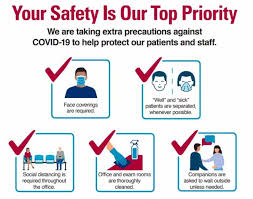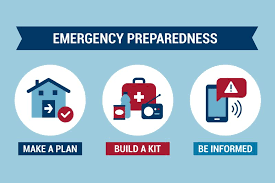Traveling alone can be a liberating and empowering experience, but it also requires careful planning and awareness, especially in regions where cultural norms and safety conditions may differ from what you’re used to. For women traveling alone in Asia, the vibrant cultures and diverse landscapes offer incredible opportunities, but also present unique challenges. This guide provides essential travel safety tips to help you navigate your solo journey through Asia with confidence and peace of mind.
1. Research Your Destination

Before embarking on your trip, it’s crucial to gather as much information as possible about your destination. Knowledge is key to ensuring a safe and enjoyable travel experience.
1.1 Understand Local Customs and Culture
- Cultural Norms: Different countries in Asia have varying cultural norms, dress codes, and social behaviors. Understanding these can help you avoid inadvertently offending locals or finding yourself in uncomfortable situations.
- Behavioral Expectations: Research how locals typically interact with tourists, particularly solo female travelers. This includes understanding appropriate dress codes, gestures, and communication styles.
1.2 Safety and Health Information
- Safety Levels: Check travel advisories and safety reports for your destination. Websites like the U.S. Department of State or your country’s foreign affairs department provide up-to-date information on safety conditions.
- Health Precautions: Be aware of any necessary vaccinations, health risks, or local medical facilities. Carry a basic first-aid kit and know how to access medical help if needed.
2. Plan Your Accommodations Wisely
Choosing the right place to stay can significantly impact your safety and comfort.
2.1 Choose Reputable Accommodations
- Reviews and Ratings: Opt for accommodations with positive reviews from other solo female travelers. Platforms like TripAdvisor, Booking.com, and Airbnb often provide user reviews and ratings.
- Security Features: Look for places with good security features, such as 24-hour reception, in-room safes, and secure entry systems. Avoid accommodations that seem unsafe or have inadequate security measures.
2.2 Stay in Well-Lit and Safe Areas
- Location: Choose accommodations in well-lit, safe neighborhoods. Avoid isolated or poorly lit areas, especially when returning to your lodgings at night.
- Transportation: Ensure that your accommodation is easily accessible by public transportation or reliable taxi services. Familiarize yourself with the safest routes to and from your accommodation.
3. Stay Connected and Informed
Maintaining communication and staying informed about your surroundings is crucial for your safety.
3.1 Keep in Touch
- Share Your Itinerary: Share your travel itinerary, accommodation details, and contact information with a trusted friend or family member.
- Regular Updates: Check in with someone regularly to let them know you’re safe and provide updates on your whereabouts.
3.2 Use Technology Wisely
- Navigation Apps: Use navigation apps like Google Maps or Maps.me to help you find your way and avoid getting lost. Ensure your phone is charged and carry a portable charger.
- Local Emergency Numbers: Know the local emergency numbers for police, medical services, and fire departments in your destination. Save these numbers in your phone for quick access.
4. Practice Personal Safety Measures

Being aware of your surroundings and practicing personal safety measures can help you avoid potential risks.
4.1 Stay Alert and Aware
- Be Conscious of Your Surroundings: Stay aware of your surroundings, especially in crowded areas or unfamiliar environments. Avoid distractions like looking at your phone while walking.
- Trust Your Instincts: If something feels off or makes you uncomfortable, trust your instincts and remove yourself from the situation.
4.2 Secure Your Belongings
- Use Anti-Theft Gear: Invest in anti-theft gear such as a money belt, anti-slash bags, or travel locks to protect your valuables.
- Keep Valuables Safe: Keep your passport, money, and important documents secure and avoid displaying them in public. Use hotel safes or locked luggage when not in use.
4.3 Avoid Risky Situations
- Stay Sober: Be cautious with alcohol consumption and avoid accepting drinks from strangers. Excessive drinking can impair your judgment and make you more vulnerable to theft or other risks.
- Avoid Isolated Areas: Avoid walking alone in isolated or poorly lit areas, especially at night. Stick to well-populated and well-lit areas.
5. Understand Local Transportation Options
Familiarizing yourself with local transportation options can help you navigate safely and efficiently.
5.1 Use Reliable Transportation
- Reputable Services: Use reputable taxi services or rideshare apps like Grab or Uber, which often have safety features like driver tracking and ratings.
- Public Transportation: Familiarize yourself with local public transportation systems and routes. Avoid using public transportation late at night if it’s not well-regarded for safety.
5.2 Avoid Unofficial Taxis
- Verify Taxi Services: Only use official taxis or rideshare services. Avoid hailing taxis off the street, especially in areas where scams or safety issues are reported.
- Agree on Fares: If using a taxi, agree on the fare before starting your journey to avoid disputes or overcharging.
6. Engage with the Local Community
Engaging with locals can enhance your travel experience and provide valuable insights into the area.
6.1 Join Group Activities
- Tours and Classes: Participate in group tours, classes, or activities to meet fellow travelers and locals. This can provide a safer way to explore new areas and enjoy activities with others.
- Cultural Events: Attend local cultural events or festivals to immerse yourself in the culture and connect with local people.
6.2 Learn Basic Local Phrases
- Language Skills: Learn a few basic phrases in the local language. This can help you navigate situations more effectively and build rapport with locals.
- Communication Tools: Use translation apps to assist with communication if needed. This can help you overcome language barriers and facilitate interactions.
7. Be Prepared for Emergencies

Being prepared for emergencies can help you respond quickly and effectively if needed.
7.1 Have an Emergency Plan
- Know Local Emergency Services: Familiarize yourself with local emergency services and procedures. Know where the nearest embassy or consulate is located in case you need assistance.
- Emergency Contacts: Have a list of emergency contacts, including local authorities, medical services, and your country’s embassy or consulate.
7.2 Keep Important Documents Secure
- Digital Copies: Keep digital copies of important documents such as your passport, visa, and travel insurance policy. Store these copies securely in case of loss or theft.
- Backup Plans: Have a backup plan for accessing funds if your primary source is lost or stolen. Consider carrying a small amount of cash and a backup credit or debit card.
8. Conclusion
Traveling alone as a woman in Asia can be a rewarding and enriching experience if approached with careful planning and awareness. By researching your destination, choosing safe accommodations, staying connected, practicing personal safety, understanding local transportation, engaging with the community, and being prepared for emergencies, you can enhance your safety and enjoyment throughout your journey.
Embrace the opportunity to explore new cultures, meet new people, and create lasting memories while prioritizing your safety and well-being. With these travel safety tips in mind, you can confidently embark on your solo adventure in Asia and make the most of your travels.



